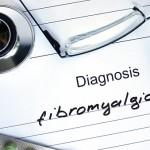

 Fibromyalgia and ALS (amyotrophic lateral sclerosis) both affect the muscles, although the former is associated with widespread musculoskeletal pain while the latter attacks nerve cells that control voluntary muscles.
Fibromyalgia and ALS (amyotrophic lateral sclerosis) both affect the muscles, although the former is associated with widespread musculoskeletal pain while the latter attacks nerve cells that control voluntary muscles.
Aside from muscle pain, fibromyalgia also involves sleep disturbances, mood changes, and memory issues. It is believed to be caused by a physical trauma or psychological stress, but the exact cause is still unknown. Fibromyalgia is often accompanied by other conditions as well, including anxiety, irritable bowel syndrome, and depression.
ALS is a neurological disease and is part of a cluster of disorders known as motor neuron diseases that involve gradual degeneration and death of motor neurons. In a healthy individual, messages from motor neurons in the brain are transmitted to the motor neurons in the spinal cord and sent to the particular muscles. In ALS, this communication degenerates and cells begin to die. As a result, the message that is transmitted is incomplete. Unable to function, the muscles begin to weaken and waste away over time. Eventually, communication from the brain to muscles is lost completely.
In its early stage, ALS – also known as Lou Gehrig’s disease – may appear similar to fibromyalgia, which itself is difficult to diagnose, so it can go undetected for quite some time. Here we will outline the differences between ALS and fibromyalgia, from symptoms to causes and treatment methods.
U.S. prevalence of fibromyalgia accounts for roughly two percent of the population, and prevalence is much higher in women than men.
It is not clear how many people are affected by ALS, but the estimates range between 12,000 and 15,000. Doctor tell roughly 5,000 patients annually that they have ALS. Records on ALS have not been well kept across the country, so estimates may fall way below the actual rates. Common age of ALS diagnosis is between 55 and 75, and life expectancy is anywhere between two and five years after the onset of symptoms. Longevity in ALS is strongly linked to a person’s age. Younger individuals with ALS tend to live longer than those diagnosed at an older age.
 Common signs and symptoms of fibromyalgia include chronic muscle pain and spasms, moderate to severe fatigue, low energy, insomnia or difficulty sleeping, stiffness upon awakening, difficulty remembering, concentrating, or performing simple mental tasks (known as fibro fog); symptoms similar to IBS including abdominal pain, gas and bloating; tension and migraine headaches, jaw and facial tenderness, sensitivity to odor, light and noise, feeling anxious or depressed, numbness or tingling, urinary urgency or increased frequency, reduced tolerance for exercise, and a feeling of swelling.
Common signs and symptoms of fibromyalgia include chronic muscle pain and spasms, moderate to severe fatigue, low energy, insomnia or difficulty sleeping, stiffness upon awakening, difficulty remembering, concentrating, or performing simple mental tasks (known as fibro fog); symptoms similar to IBS including abdominal pain, gas and bloating; tension and migraine headaches, jaw and facial tenderness, sensitivity to odor, light and noise, feeling anxious or depressed, numbness or tingling, urinary urgency or increased frequency, reduced tolerance for exercise, and a feeling of swelling.
Signs and symptoms of ALS include slurred speech, hoarseness, difficulty swallowing, emotional liability (involuntary laughing or crying), loss of tongue muscle contour, excess saliva, difficulty breathing, limp muscles or flaccid weakness, muscle wasting, and twitching.
In the early stages of the disease, ALS patients may notice that performing regular everyday tasks has become more challenging. For example, they may experience difficulty climbing steps or getting up from a chair. Symptoms may first begin on one side of the body, but as the condition progresses, symptoms are experienced on both sides of the body.
The cause of fibromyalgia is largely theorized, as it is not well understood. Researchers and doctors believe that a fibromyalgia patient experiences amplified pain due to abnormal sensory processing in the central nervous system. Much research has detected physiological abnormalities in fibromyalgia, including increased levels of substance P in the spinal cord, low levels of blood flow to the thalamus region of the brain, HPA axis hypofunction, low levels of serotonin and tryptophan, and abnormalities in cytokine function. Other fibromyalgia triggers include genetic factors and traumatic events or injuries.
There are many unanswered questions about ALS, including the root cause. What we do know is that nerve cells that control the movement of muscles in people suffering from ALS gradually die.
Researchers around the world continue to investigate the possible causes of ALS, including whether the immune system plays a role in attacking the body cells, potentially killing nerve cells. Scientists are further examining chemical imbalance and trying to determine if proteins in people with ALS are being incorrectly processed by nerve cells.
Environmental factors are also being put under the scrutiny. One study has stated that members of the military personnel in the Gulf region during the 1991 war were more likely to develop Lou Gehrig’s disease than military personnel stationed anywhere else. The question is, could mechanical or electrical trauma, exposure to high levels of exercise, exposure to high levels of agricultural chemicals, or heavy metals play a role?
 Risk factors for fibromyalgia include sex – women are at a higher risk of fibromyalgia than men, a family history of fibromyalgia – a genetic component to the disease, and a rheumatic disease diagnosis.
Risk factors for fibromyalgia include sex – women are at a higher risk of fibromyalgia than men, a family history of fibromyalgia – a genetic component to the disease, and a rheumatic disease diagnosis.
Fibromyalgia complications include poor ability to function due to lack of sleep, which worsens symptoms. Anxiety and depression, too, may be a result of fibromyalgia as it is not a well-understood condition, so it can be frustrating to live in pain when many others simply don’t understand, especially because there is no specific cure or treatment.
Studies into ALS have revealed some interesting insight. For example, it may just be that some people with this disease are triggered by certain environmental factors. More investigation is needed, but we can tell you that the environmental triggers under investigation include smoking, lead exposure, and military service. Recent research has indicated that people who have served in the military are at a higher risk of getting ALS.
Studies are also looking at the entire human genome, since research has uncovered a number of genetic variations that people with familial ALS and some with non-inherited ALS have in common. These variations might make people more prone to ALS.
While muscle control and speech problems are earlier signs of ALS, complications arise and include paralysis and difficulty breathing. Some people use ventilation machines to assist them in breathing, and others choose to have a tracheostomy, which is a hole created at the front of their neck leading into their windpipe to allow for the use of a respirator to inflate and deflate their lungs. Respiratory failure is the most common cause of death for people who are diagnosed with ALS.
There isn’t a specific test for fibromyalgia, but doctors may use a form of testing that checks 18 specific trigger points that have been found to be present in majority of fibromyalgia patients. Not all doctors use trigger point exams anymore, but rather they narrow in on a fibromyalgia diagnosis if a person has experienced widespread pain for at least three months. Your doctor may also refer you for some blood work to rule out other conditions.
ALS is very hard to diagnose because no specific test has been established to determine if a person has this fatal condition. A clinical examination, diagnostic tests, and often ruling out other diseases can help a doctor establish what the problem is. Diagnostic tests may include blood and urine tests, a spinal tap, X-rays, an MRI, an EMG, or even a muscle or nerve biopsy. A thorough neurological examination is also a diagnostic measurement.
Treating fibromyalgia can be difficult, as its exact cause is unknown. Therefore, the goal of fibromyalgia treatment is symptom management. A doctor may prescribe analgesics, or painkillers, to address fibromyalgia. However, there is a risk of developing addiction to these drugs, so doctors may recommend this option with caution. Nonsteroidal anti-inflammatory drugs (NSAIDs) can also be taken for pain management, but once again long-term use of these drugs can yield unwanted side effects. In some cases, antidepressants may be prescribed as well.
Some alternative and complementary therapies and treatments for fibromyalgia include massages, acupuncture, cognitive behavioral therapy, movement therapies, and chiropractic.
Since there is no cure for ALS, the treatment focuses on helping the patient cope with the symptoms, preventing unnecessary complications, as well as slowing the progress of the disease. There is an FDA-approved drug (Riluzole) that has slowed the progression of ALS is some people. Doctors also prescribe various medications to treat the many symptoms of the disease.
As you can see, fibromyalgia and ALS are complicated conditions and there is still much unknown about either one of them. As research continues to explore either condition, it moves us closer to not only better understanding these conditions, but to uncovering a possible cure as well.
Lyme disease vs. ALS, differences in symptoms, causes, and treatment
Since ALS signs can be similar to treatable diseases, such as Lyme disease, some people think that an infection like Lyme disease can cause ALS, which stands for Amyotrophic Lateral Sclerosis. The truth is, Lyme disease does not cause ALS. Lyme disease and ALS are two separate conditions. Continue reading…
Fibromyalgia treatment using muscle-stretching exercises shows benefits: Study
Fibromyalgia treatment using muscle-stretching exercises has shown benefits, studies show. Fibromyalgia is a condition that causes widespread pain and stiffness, and although it may seem like living with these symptoms may hinder exercising and stretching, these are actually beneficial for the improvement of fibromyalgia. Continue reading…
Copyright © www.orthopaedics.win Bone Health All Rights Reserved